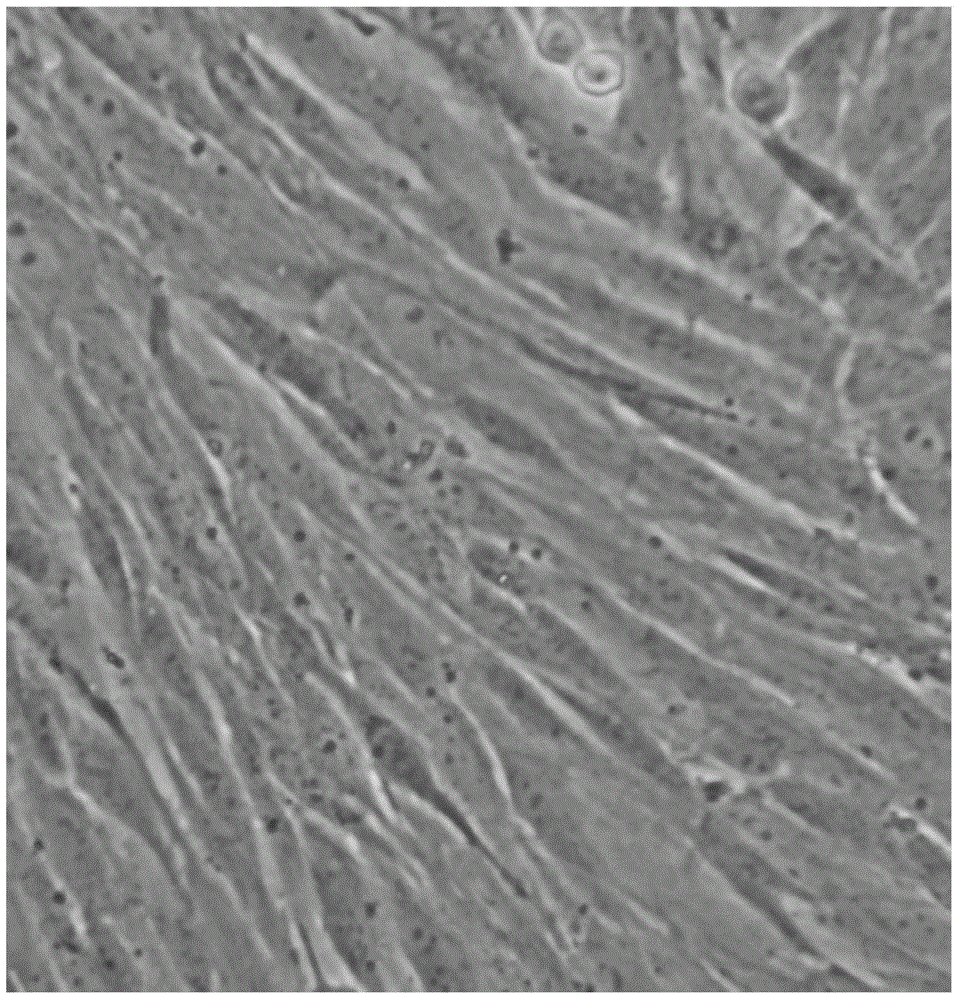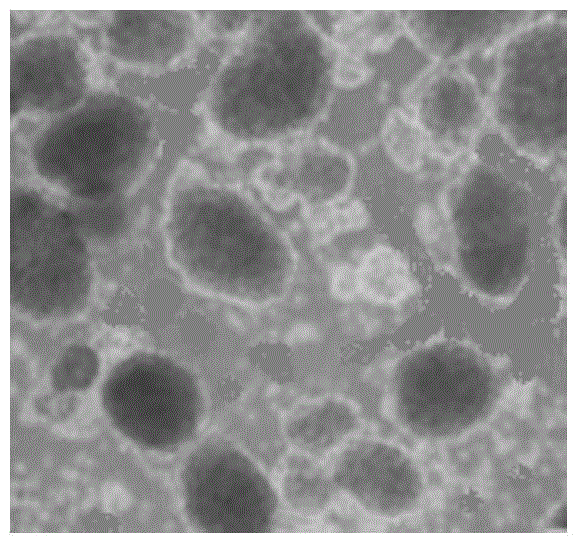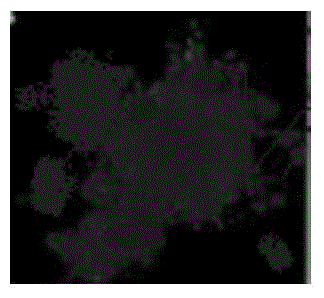Method for inducing placenta-derived mesenchymal stem cells to be differentiated into islet-like cells
A technique for islet-like cells and stromal cells, which is applied in the field of inducing the differentiation of placental mesenchymal stem cells into islet-like cells, can solve the problems of reducing the number of bone marrow stem cells, difficulty in obtaining materials, and easily causing tumors, and achieves a wide range of placenta sources and expansion ability. Strong effect with less chance of infection
- Summary
- Abstract
- Description
- Claims
- Application Information
AI Technical Summary
Problems solved by technology
Method used
Image
Examples
Embodiment 1
[0036] The method for inducing placental mesenchymal stem cells to differentiate into islet-like cells, the steps are as follows:
[0037] Step 1: The stage of in vitro isolation and culture of placental mesenchymal stem cells, as follows:
[0038] Select the placenta of full-term cesarean section, digest the placental tissue with 0.1% type Ⅰ collagenase for 60 minutes, centrifuge at 1800r / min for 5 minutes, obtain the digested cell pellet, wash the cell pellet twice, and inoculate it in ordinary culture In the medium, the medium contains 10% fetal bovine serum and α-MEM, and the culture conditions are 37°C, 5% CO2, and 95% saturated humidity. The medium is changed after 72 hours, and the medium is changed every 2 days. Once, the growth of the cells was observed under a microscope; the observations were as follows: figure 1 shown.
[0039] Step 2: Phenotyping stage of placental mesenchymal stem cells, as follows:
[0040] The vigorously growing cells of the third generation...
Embodiment 2
[0054] The method for inducing placental mesenchymal stem cells to differentiate into islet-like cells, the steps are as follows:
[0055] Step 1: The stage of in vitro isolation and culture of placental mesenchymal stem cells, as follows:
[0056] Select the placenta of full-term cesarean section, digest the placental tissue with 0.1% type Ⅰ collagenase for 60 minutes, centrifuge at 1800r / min for 5 minutes, obtain the digested cell pellet, wash the cell pellet twice, and inoculate it in ordinary culture In the medium, the medium contains 10% fetal bovine serum and α-MEM, and the culture conditions are 37°C, 5% CO2, and 95% saturated humidity. The medium is changed after 72 hours, and the medium is changed every 2.5 days. Once, the growth of the cells was observed under a microscope; the observations were as follows: figure 1 shown.
[0057] Step 2: Phenotyping stage of placental mesenchymal stem cells, as follows:
[0058] The vigorously growing cells of the third generati...
Embodiment 3
[0072] The method for inducing placental mesenchymal stem cells to differentiate into islet-like cells, the steps are as follows:
[0073] Step 1: The stage of in vitro isolation and culture of placental mesenchymal stem cells, as follows:
[0074] Select the placenta of full-term cesarean section, digest the placental tissue with 0.1% type Ⅰ collagenase for 60 minutes, centrifuge at 1800r / min for 5 minutes, obtain the digested cell pellet, wash the cell pellet three times, and inoculate it in ordinary culture In the medium, the medium contains 10% fetal bovine serum and α-MEM, and the culture conditions are 37°C, 5% CO2, and 95% saturated humidity. The medium is changed after 72 hours, and the medium is changed every 3 days. Once, the growth of the cells was observed under a microscope; the observations were as follows: figure 1 shown.
[0075] Step 2: Phenotyping stage of placental mesenchymal stem cells, as follows:
[0076] The vigorously growing cells of the third gene...
PUM
 Login to View More
Login to View More Abstract
Description
Claims
Application Information
 Login to View More
Login to View More - R&D
- Intellectual Property
- Life Sciences
- Materials
- Tech Scout
- Unparalleled Data Quality
- Higher Quality Content
- 60% Fewer Hallucinations
Browse by: Latest US Patents, China's latest patents, Technical Efficacy Thesaurus, Application Domain, Technology Topic, Popular Technical Reports.
© 2025 PatSnap. All rights reserved.Legal|Privacy policy|Modern Slavery Act Transparency Statement|Sitemap|About US| Contact US: help@patsnap.com



